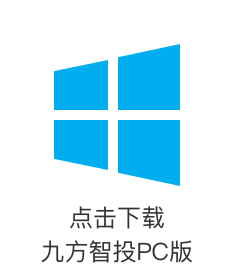2021 and 1Q22 results missed our expectations
Wanliyang announced its 2021 and 1Q22 results: In 2021, revenue fell 9.7% YoY to Rmb5.48bn, while attributable net profit and recurring net profit plunged 221.1% and 288.3% YoY to -Rmb747mn and -Rmb843mn. In 1Q22, revenue dropped 6.5% YoY (+10.6% QoQ) to Rmb1.27bn, while attributable net profit and recurring net profit declined 44.7% and 62.9% YoY (+107.5% and +267.9% QoQ) to Rmb94.35mn and Rmb56.24mn. The firm’s 2021 and 1Q22 results missed our expectations mainly due to raw material price hikes and weak downstream demand.
Trends to watch
Declining sales volume of CVs and downstream chip shortage for PV business dragged revenue in 2021. In 2021, Wanliyang’s revenue from the commercial vehicle (CV) transmission business fell 25% YoY to Rmb1.45bn, mainly due to weakening demand from the light-duty truck (LDT) and heavy-duty truck (HDT) industry. In 2021, industrywide sales volume of LDT and HDT declined 4% and 14% YoY. The firm’s revenue from the passenger vehicle (PV) transmission business dropped 5% YoY to Rmb3.65bn, mainly due to output reduction at its downstream clients (e.g. Chery and Geely) given the chip shortage. In 1Q22, CV sales volume plunged, dragging down the firm’s overall revenue QoQ. Looking ahead, we believe demand for CVs will remain low, and sales volume of HDTs will continue to decline YoY, with that of LDTs remaining stable. Therefore, we remain conservative on the firm’s CV business in 2022. However, we expect the firm’s sales volume of PV transmissions to gradually recover as the chip shortage eases in 2022.
Raw material price hikes weighed on profitability; goodwill impairment led to loss in 2021. In 2021, raw material price hikes (e.g. steel and aluminum) weighed on Wanliyang’s profitability, resulting in GM falling 2.5ppt YoY (2021) and 6.2ppt YoY (1Q22). In 2021, the firm made provisions for goodwill impairment of Rmb944mn, mainly due to lower-than-expected earnings from Wuhu Wanliyang Transmission Co., Ltd., the firm’s subsidiary specializing in PV transmissions. Factoring out the impact of goodwill impairment, we estimate the firm’s attributable net profit at Rmb197mn (down 68.1% YoY).
Further penetration into hybrid and pure electric vehicle markets; business expansion through M&A. We expect Wanliyang to gradually increase the penetration rate of its hybrid and pure electric vehicles, riding the policy tailwinds under the carbon neutrality target. The firm’s self-developed dedicated hybrid transmission (DHT) products have finished testing on multiple vehicles and will likely contribute incremental revenue. In addition, the firm has developed an electro-continuously variable transmission (ECVT) product, and worked with Bosch to jointly further expand its presence in the market. In January 2022, the firm acquired a 51% stake in Zhejiang Wanliyang Energy Technology Co., Ltd. with Rmb110mn to expand into the energy-storage power station sector. At present, the firm has four energy storage power stations that are in operation in Guangdong and Gansu, with installations totaling 40MW. Meanwhile, the firm has signed an agreement to invest in the construction of 1000MW of new energy storage power station projects. We expect the energy storage business to create a new growth driver for the firm.
Financials and valuation
Given our conservative expectations for CV sales volume, we lower our 2022 net profit forecast 39.5% to Rmb532mn, and introduce our 2023 net profit forecast at Rmb716mn. The stock is trading at 14.3x 2022e and 10.6x 2023e P/E. Considering lower sectoral median valuation and earnings forecasts, we cut our TP 42.9% to Rmb8 (19.5x 2022e and 14.5x 2023e P/E), offering 37.8% upside.
Risks
Recovery of CV business disappoints; raw material price hikes weigh on profitability.













